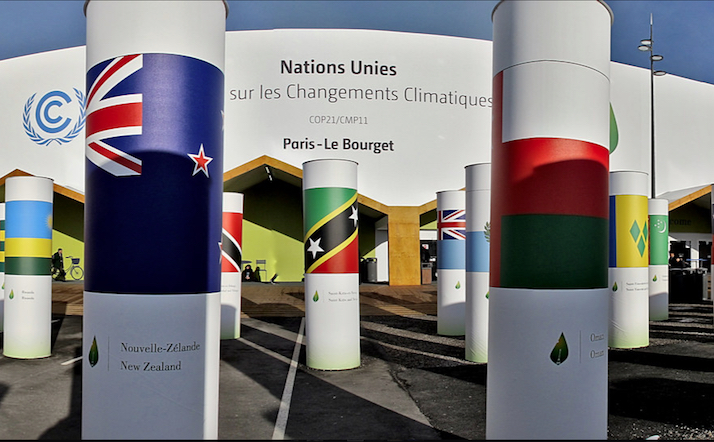By Tim Radford
Climate News Network
National promises made late last year to contain carbon dioxide emissions will not be nearly enough to meet the global warming target agreed last December by 195 nations, according to a new assessment.
The signatories to the historic agreement at the U.N. conference on climate change in Paris pledged to limit global warming to below 2 degrees Celsius (3.8 degrees Fahrenheit) and to aim for no more than 1.5C rise above pre-industrial levels.
The planet has already warmed by 1C in the last century. But, climate scientists say, the intended nationally determined contributions (INDCs) submitted before the meeting imply global warming of between 2.6C and 3.1C. So more needs to be done, they report in the journal Nature.
“The Paris Agreement was a historical achievement for the world’s response to climate change, aiming at limiting warming to below 1.5C and 2C,” says Joeri Rogelj, the International Institute for Applied Systems Analysis (IIASA) research scholar who led the study.
Finite amount
“It puts in place a flexible framework for a long-term transformation towards a low-carbon society. But our analysis shows that these measures need to be strengthened in order to have a good chance of keeping warming to well below 2C, let alone 1.5C.”
The researchers argue in their study that to limit warming to any level implies that the total amount of CO2 that can ever be emitted into the atmosphere is finite.
“About two-thirds of the available budget for keeping warming to below 2C have already been emitted,” they write. “Global emissions urgently need to start to decline.”
That it can be done, and that the Paris target is realistic and achievable, is confirmed by a second group of researchers in the journal Nature Climate Change.
They reason that the difference between 1.5C and 2C is substantial, in terms of sea-level rise, the loss of the glaciers and damage to the rainforests. However, the process of containing global average temperature rise demands a “controlled implosion” of the fossil fuel industry, and a technological explosion of renewable energy systems.
“The Paris agreement is a historic achievement and a genuine triumph of reason,” says Hans Joachim Schellnhuber, director of the Potsdam Institute for Climate Impact Research, who led the study. “Now the pressure is on to implement that consensus in time, in order to avoid the looming humanitarian tragedy for good.”
And the latest look at the challenges, led by the IIASA team, is another instance of that pressure.
The researchers calculate – on the basis of all the INDCs submitted by the time of the Paris meeting, from up to 187 of the parties to the conference, and responsible for up to 96 percent of all greenhouse-gas emissions – that the entire global budget for limiting global warming to below 2C might have already been emitted by 2030.
To put it briefly, the promises made so far are not enough. Since the Paris Agreement requires the signatories to submit fresh and ever more ambitious INDC pledges every five years, political opportunity exists, along with societal challenge.
Range of uncertainties
The latest Nature study considers a number of scenarios and a range of uncertainties, and then goes on to frame the probabilities of success.
And it concludes that “substantial enhancement or over-delivery” of the promises made so far is necessary to maintain a reasonable chance of keeping warming to well below the 2C target.
“To go the rest of the way, we would need to assume much more stringent action after 2030, which leads to emissions reductions of 3 percent to 4 percent per year globally,” says the report’s co-author, Niklas Höhne, founding partner of the Germany-based NewClimate Institute for Climate Policy and Global Sustainability.
“But, in practice, switching to such stringent reductions right after 2030 would be challenging, and require time. That means that in order to ensure a chance of meeting these targets, we need further significant action from countries before 2030.”
+++++
This article was originally published by U.K.-based Climate News Network, which is run by four volunteers. All are veteran journalists who have covered climate change for many years for leading British newspapers and broadcasters and are now freelancing. Tim Radford was formerly science editor of The Guardian.

